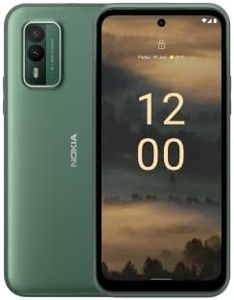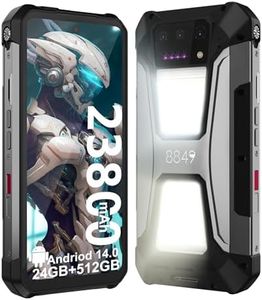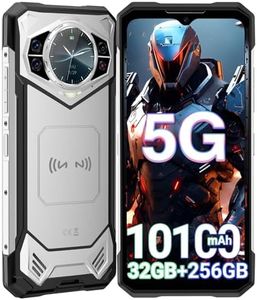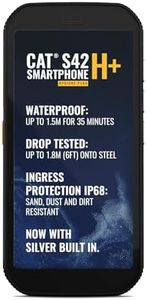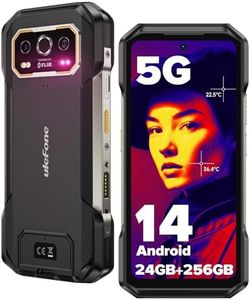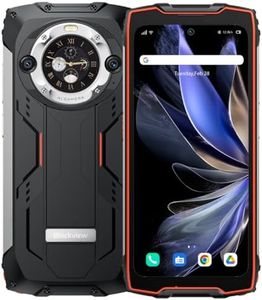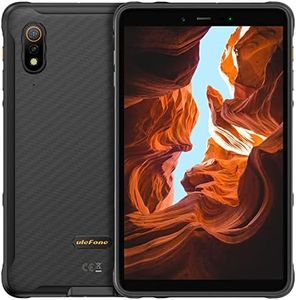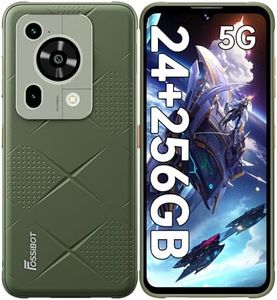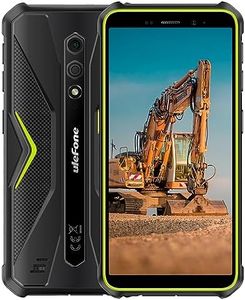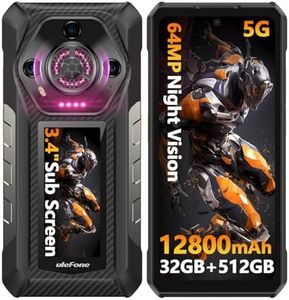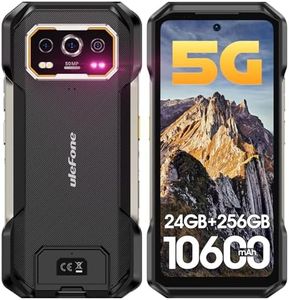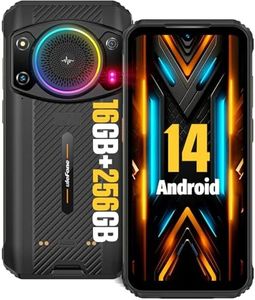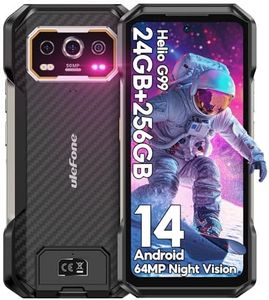We Use CookiesWe use cookies to enhance the security, performance,
functionality and for analytical and promotional activities. By continuing to browse this site you
are agreeing to our privacy policy
10 Best Rugged Phones
From leading brands and best sellers available on the web.Buying Guide for the Best Rugged Phones
Rugged phones are built for people who need more than just an ordinary smartphone—they're designed to survive in challenging environments, such as construction sites, outdoor adventures, or extreme weather. Picking the right rugged phone is about finding the right balance between toughness, performance, usability, and features that match your activities. It's important to look beyond just the rugged look and dig into the technical specifications to find a device that can keep up with your lifestyle. Start by thinking about where and how you'll use the phone so you can narrow down which features and specs matter most to you.Durability Ratings (IP, MIL-STD)Durability ratings show how well the phone can resist things like water, dust, and drops. The IP rating stands for 'Ingress Protection' and has two numbers: the first for solids like dust (0 to 6) and the second for liquids like water (0 to 8 or 9). For example, IP68 means dust-tight and can handle submersion in water. MIL-STD, such as MIL-STD-810G, is a military standard that tests against things like shock, vibration, and extreme temperatures. If you'll be using your phone in wet, dirty, or active environments, look for higher IP and certified MIL-STD numbers to be sure it can handle those conditions.
Battery LifeBattery life determines how long your phone will last between charges, and it's a major factor for people who work long hours outdoors or are far from a power source. Rugged phones usually have larger batteries, measured in milliampere-hours (mAh). Batteries under 4000mAh are best for light use, 4000-6000mAh suits most moderate use and daylong adventures, and above 6000mAh is good for heavy users or multi-day trips. Consider your access to charging and how long you need the phone to last before selecting your desired battery capacity.
Display Type and BrightnessThe display is what you look at and interact with, and its type and brightness affect visibility, especially outdoors. Look for screens that are bright enough to read in sunlight (measured in nits), with toughened glass to resist cracks or scratches. Small-sized screens save battery and are easier to use one-handed, while larger screens are better for maps and media. If you're often outside or in direct light, prioritize high brightness and reinforced glass.
Performance (Processor and RAM)Performance refers to how smoothly the phone runs apps, handles multitasking, and processes data. The processor and RAM play key roles here. Entry-level rugged phones have basic chips and around 2-4GB RAM for calling, texting, and light apps. Mid-range ones offer 4-6GB RAM for moderate multitasking and most work apps. High-end units go beyond that for gaming or demanding tools. Think about whether you'll use your phone just for calls and navigation, or if you need it to run advanced apps and multitask.
Camera QualityCamera quality matters if you use your phone for jobsite documentation, scanning, or capturing memories outdoors. Rugged phones often have simpler cameras, but some offer high-megapixel sensors and extra lenses. Basic 8-12MP cameras work for documentation, while 16MP or more, with extra features like night mode or wide-angle, are useful for creative or professional shots. Choose based on whether crisp, detailed photos are important to you, or if you just need clear, functional images.
Connectivity (4G/5G, Wi-Fi, GPS)Connectivity includes mobile network support, Wi-Fi, and GPS. Some rugged phones only have 4G capabilities, while others support faster 5G for future-proof usage. GPS accuracy is key for hikers and field workers, and some models offer enhanced positioning systems. Wi-Fi standards determine how fast you can connect when indoors. If you work in remote areas, prioritize strong GPS and network support; if you mostly use your phone in cities, basic connectivity may be enough.
Physical Features (Buttons, Ports, Size)Physical features like programmable buttons, extra-loud speakers, or reinforced charging ports can make a big difference in usability, especially with gloves or in loud environments. Some rugged phones are very bulky for higher protection, while lighter models trade a bit of ruggedness for more comfort. Decide which physical aspects matter most—easy-to-press buttons, loud audio, or compact size—and look for models that fit your way of working or adventuring.
